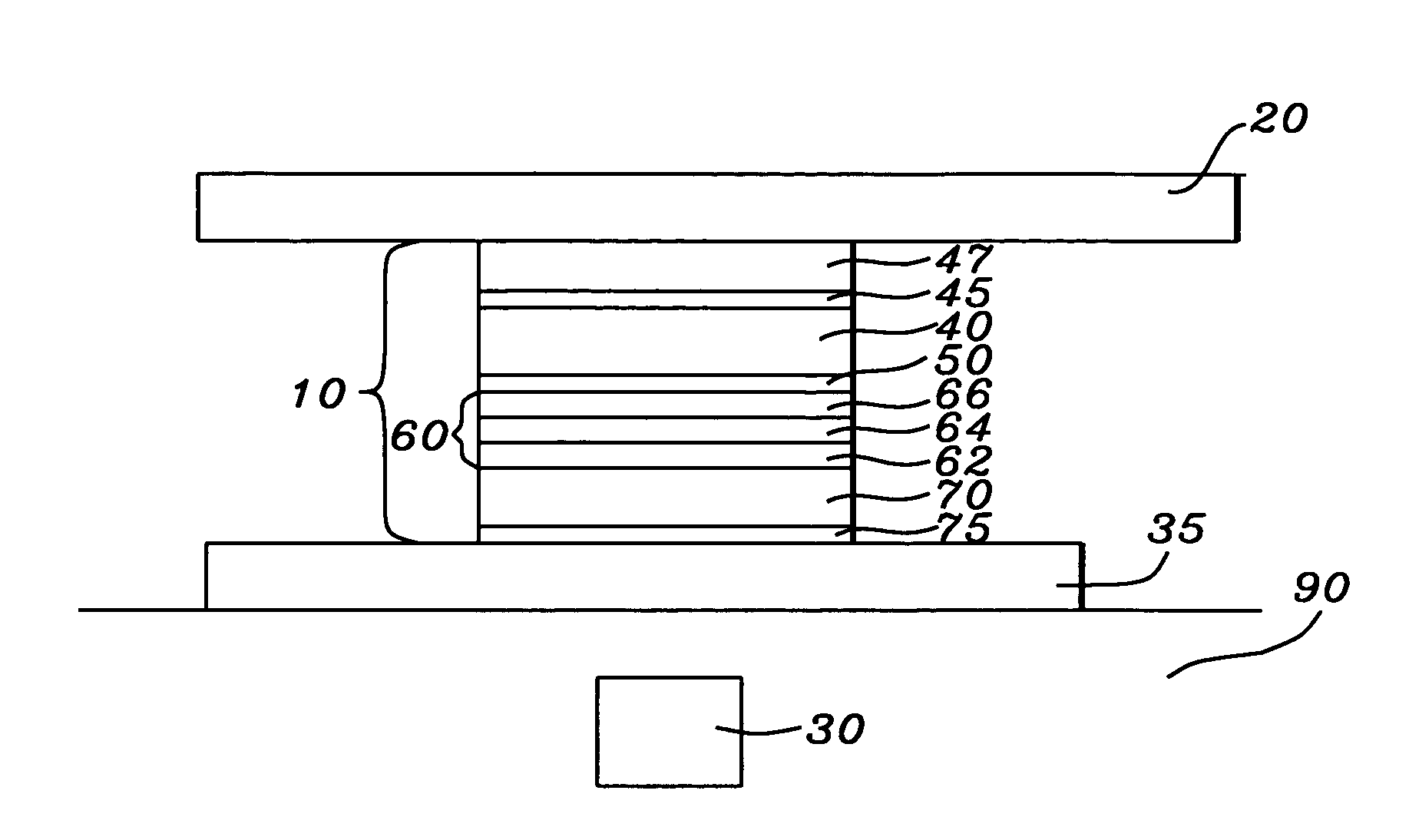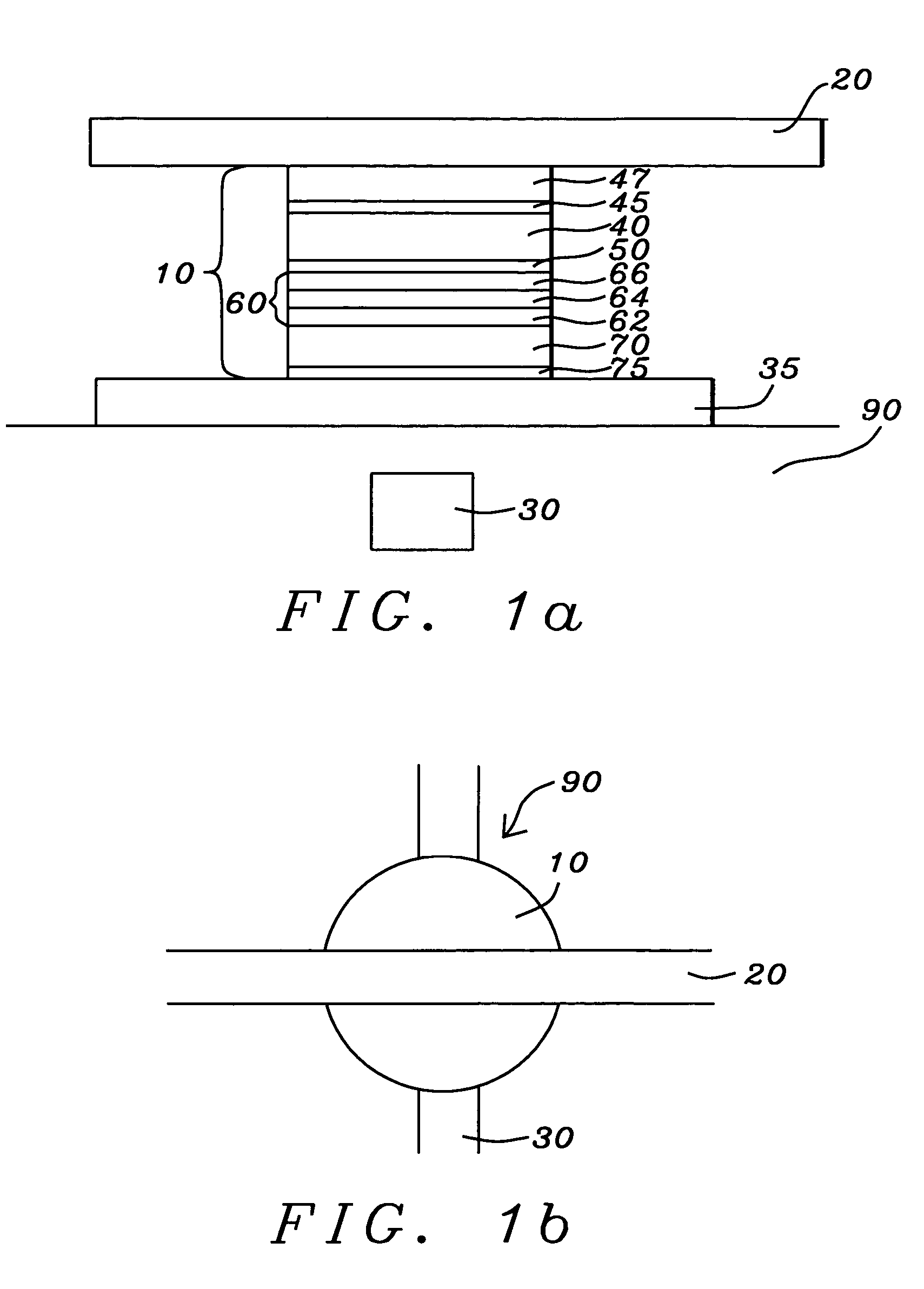Magnetic tunneling junction film structure with process determined in-plane magnetic anisotropy
a tunnel junction and film structure technology, applied in the direction of inductance/transformer/magnet manufacturing, magnetic bodies, instruments, etc., can solve the problems of non-planar surfaces, significant problems, and undesirable mtj devices having excessive magnetic coupling between adjacent magnetic layers, so as to prevent inadvertent switching of adjacent mtj cells, reduce coercivity, and improve shielding effect
- Summary
- Abstract
- Description
- Claims
- Application Information
AI Technical Summary
Benefits of technology
Problems solved by technology
Method used
Image
Examples
Embodiment Construction
[0017]The preferred embodiment of the present invention teaches a method of forming an MTJ device (also called an MTJ memory cell) as one of an MRAM cell array of such devices, the ferromagnetic free layer of each such device having a magnetic anisotropy created by magnetic coupling through their interface with an antiferromagnetic layer.
[0018]Referring to FIG. 1a, there is shown a schematic vertical cross-sectional view of an MTJ cell (10) formed in accord with the method of the present invention. The cell is disposed between a substantially planar substrate, which contains a word line (30) that is insulated (90) from the cell and a bit line (20), which contacts an upper portion of the cell and which runs orthogonally to the word line. A lower conducting electrode (35) contacts a lower portion of the cell and is required for reading operations. The cell is thereby positioned at an orthogonal junction between the word and bit lines and is disposed between them. An overhead view of t...
PUM
 Login to View More
Login to View More Abstract
Description
Claims
Application Information
 Login to View More
Login to View More - R&D
- Intellectual Property
- Life Sciences
- Materials
- Tech Scout
- Unparalleled Data Quality
- Higher Quality Content
- 60% Fewer Hallucinations
Browse by: Latest US Patents, China's latest patents, Technical Efficacy Thesaurus, Application Domain, Technology Topic, Popular Technical Reports.
© 2025 PatSnap. All rights reserved.Legal|Privacy policy|Modern Slavery Act Transparency Statement|Sitemap|About US| Contact US: help@patsnap.com


